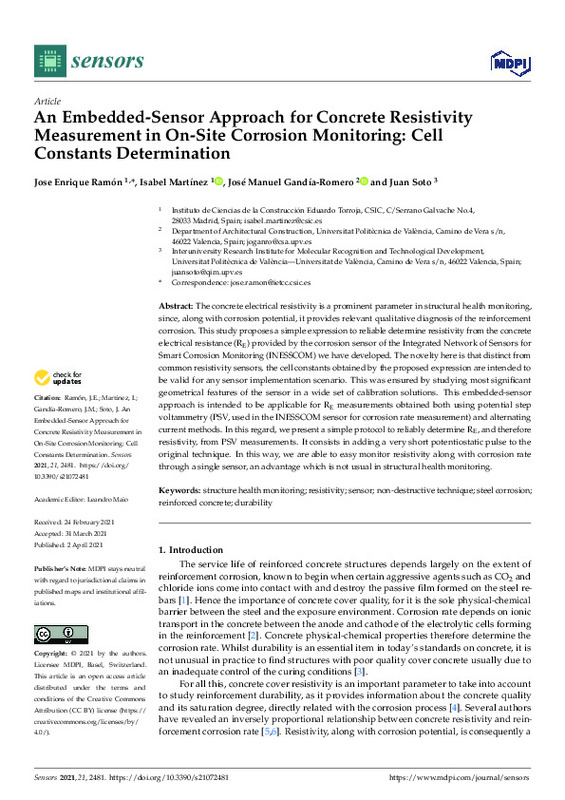JavaScript is disabled for your browser. Some features of this site may not work without it.
Buscar en RiuNet
Listar
Mi cuenta
Estadísticas
Ayuda RiuNet
Admin. UPV
An Embedded-Sensor Approach for Concrete Resistivity Measurement in On-Site Corrosion Monitoring: Cell Constants Determination
Mostrar el registro completo del ítem
Ramón, JE.; Martínez, I.; Gandía-Romero, JM.; Soto Camino, J. (2021). An Embedded-Sensor Approach for Concrete Resistivity Measurement in On-Site Corrosion Monitoring: Cell Constants Determination. Sensors. 21(7):1-23. https://doi.org/10.3390/s21072481
Por favor, use este identificador para citar o enlazar este ítem: http://hdl.handle.net/10251/176375
Ficheros en el ítem
Metadatos del ítem
| Título: | An Embedded-Sensor Approach for Concrete Resistivity Measurement in On-Site Corrosion Monitoring: Cell Constants Determination | |
| Autor: | Ramón, Jose Enrique Martínez, Isabel | |
| Entidad UPV: |
|
|
| Fecha difusión: |
|
|
| Resumen: |
[EN] The concrete electrical resistivity is a prominent parameter in structural health monitoring, since, along with corrosion potential, it provides relevant qualitative diagnosis of the reinforcement corrosion. This study ...[+]
|
|
| Palabras clave: |
|
|
| Derechos de uso: | Reconocimiento (by) | |
| Fuente: |
|
|
| DOI: |
|
|
| Editorial: |
|
|
| Versión del editor: | https://doi.org/10.3390/s21072481 | |
| Coste APC: |
|
|
| Código del Proyecto: |
|
|
| Agradecimientos: |
This research was funded by the pre-doctoral scholarship granted to Jose Enrique Ramon Zamora by the Spanish Ministry of Science and Innovation, grant number FPU13/00911. Funding was also provided by the Spanish Ministry ...[+]
|
|
| Tipo: |
|









